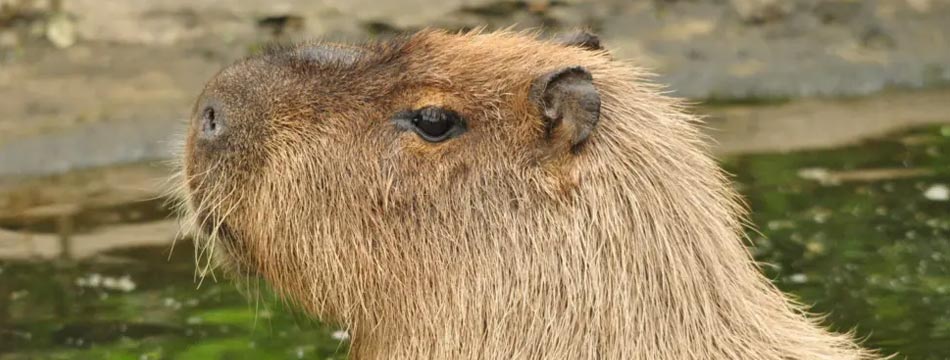
In September 2024, a renegade rodent dominated local news and radio stations (including BBC Radio 1!). Cinnamon, a juvenile capybara born at Hoo Zoo and Dinosaur World in Shropshire, escaped captivity to live what the zoo described as “her best life” in nearby woodland. Live traps, on-foot searches, and thermal imaging were all used to try and recapture Cinnamon before she wandered onto neighbouring MoD (Ministry of Defence) land. After a week of monitoring, tracking, and holding their breath, zoo staff finally reunited Cinnamon with her mother, father, and brother Churro.[1]
Quick Links
- 13th September: The Great Capybara Escape
- Thermal Cameras Track Renegade Rodent
- 20th September: Capybara Captured
- Further Information
13th September: The Great Capybara Escape
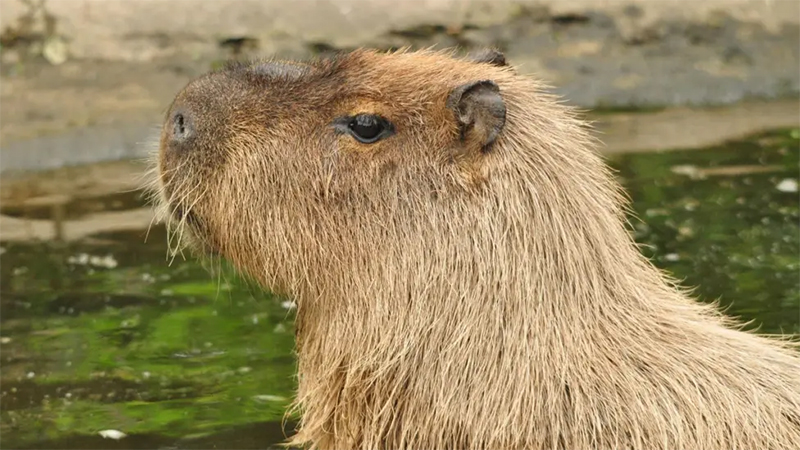
On Friday 13th September 2024, unsuspecting zoo keepers entered the capybara paddock to cut the grass. Unbeknownst to them, Cinnamon, a one-year-old capybara roughly the size of a spaniel, was lurking in the long lawn. Reports differ as to whether she was startled or sneaky, either way, Cinnamon slipped around the side of the tractor to escape the enclosure.
Joint owner of Hoo Zoo and Dinosaur World, Will Dorrell said:
“Our two young capybara here are always trying to work out a different way of trying to cause us headaches.
They’re extremely intelligent which a lot of people might not necessarily appreciate.
She seemed to know what we were going to do and was waiting there ready for that gate to be opened.”[2]
~ Will Dorrell, Joint Owner of Hoo Zoo and Dinosaur World
Hoo Zoo predicted that Cinnamon would likely head for The Humbers and surrounding fields. She was initially spotted close to the Humber Brook River near the zoo’s northern border. An area Mr Dorrell describes as “a capybara’s paradise” because of ample food (grass) and ponds.[3] Cinnamon eventually moved outside the zoo’s perimeter into zoo-owned woodland bordering a site belonging to the Ministry of Defence (MoD).
Thermal Cameras Track Renegade Rodent
Having broken free of the zoo’s perimeter, search parties and a thermal drone were deployed to scour neighbouring zoo-owned woodland for Cinnamon. Thermal footage, captured during the night, showed that Cinnamon had taken refuge in a field approximately 200m away from her paddock. A thermal drone was used the next night to track the renegade rodent’s activities. Hoo Zoo revealed in a Facebook post that:
“Last night our keepers were again working through the night to try and recapture Cinnamon.
She was spotted again by a thermal drone within 5m of the same location from Tuesday night.
Unfortunately this area is extremely dense with almost impenetrable undergrowth that Cinnamon can easily move under but we cannot.”[4]
~ Hoo Zoo and Dinosaur World
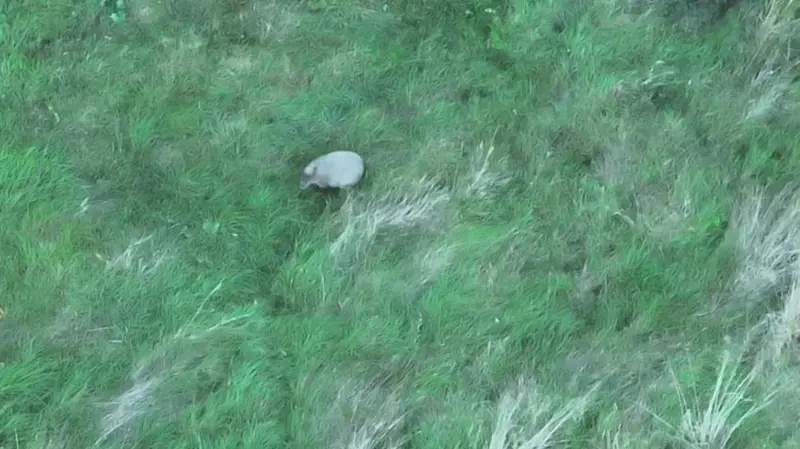
Hoo Zoo attempted to recapture their absconder using live traps (harmless cages with automatic doors) and capybara noises. However, Cinnamon was not fooled. Mr Dorrell explained:
“She actually has now made tracks around the side of the cages.
So she’s obviously seen them and decided she’s walking around them rather than through them.”
~ Will Dorrell, Joint Owner of Hoo Zoo and Dinosaur World
Thwarted by capybara intelligence and dense undergrowth that only thermal imaging and Cinnamon could penetrate, Hoo Zoo halted rescue efforts to avoid scaring their furry fugitive onto a neighbouring MoD site. Had she breached this border, recovering her would have become almost impossible. The zoo explained in a Facebook post that:
“At present [Cinnamon] is comfortable, content, not short on food and not at risk to predators so it’s better that we take our time and recapture Cinnamon with the least amount of stress possible.”[5]
~ Hoo Zoo and Dinosaur World
Thermal Imaging Improves Animal Welfare, Conservation, & Rescue
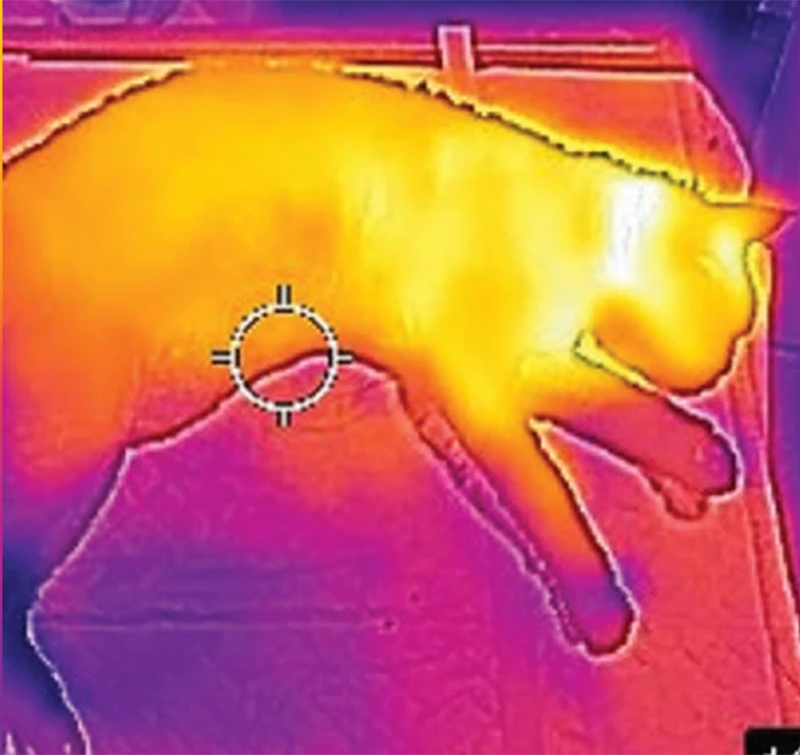
Cinnamon is far from the first creature to be monitored, tracked, and rescued with the help of thermal cameras. As thermal imaging relies on infrared energy, rather than natural/visible light, to create a picture, thermal cameras, monoculars, and drones do not require good visibility to function effectively. Consequently, these IR imagers are perfect for detecting animal heat signatures, including that of a small capybara hiding in dense undergrowth. As a result, professionals can locate and monitor the welfare of animals from a safe, non-intrusive distance; in challenging environments; and at night.
For more examples of how thermal imaging can improve the welfare of animals, please see our following articles.
Thermal Camera Used to Find Feline
Guide Develops TK612 Thermal Camera Specifically for Bat Surveys
Thermal Cameras Help Locate Lovelorn Monkey
Thermal Camera Used to Rescue Kittens
Catch Cattle Lameness with Economical Thermal Cameras
PASS Provides FLIR Thermal Camera for Poultry Farmer’s Barn Ventilation Report
How Thermal Imaging is Helping to Save a Species
Thermal imaging cameras also play a critical role in protecting habitats as detailed in the blogs below.
Thermal Imaging Used to Tackle Wildfires
Thermal Cameras Used to Monitor Tree Health
20th September: Capybara Captured
After a week of careful thermal monitoring and unsuccessful live traps, Cinnamon was finally recaptured. Fortunately Cinnamon did not cross onto MoD land; although it did take a team of ten an hour to retrieve her from the lake where she was likely “living her best life.”[6]
Becky Dorrell, joint owner of Hoo Zoo explained how the team:
“slowly herded [Cinnamon] into a spot where we could put the cage that we had and [we] just sort of coaxed her in.”[7]
~ Becky Dorrell, Joint Owner of Hoo Zoo and Dinosaur World
Thankfully, a scratched nose and pot belly were the only remnants of Cinnamon's escapades into the wide world. She was soon reunited with her brother and parents who were said to be “very disappointed in her” initially but soon forgave their adventurous daughter.[8]
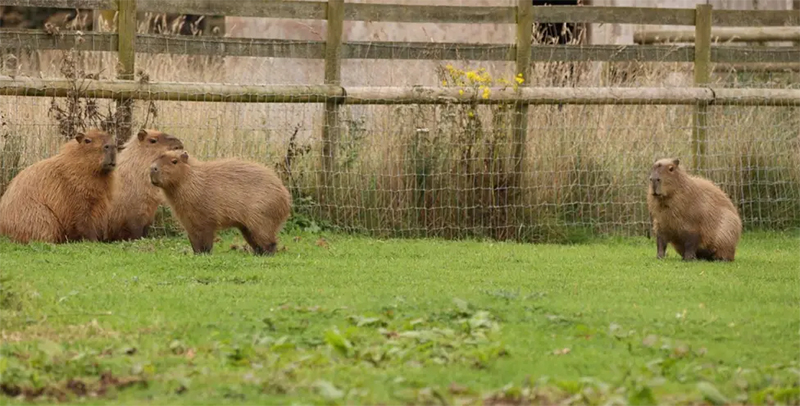
Safe, sound, and back in her enclosure, a belated capybara birthday party is planned for later this month (October) as Cinnamon missed her, and twin brother Churro’s, first birthday in all the excitement of being on the run. That is of course provided she doesn’t make another break for it. Joint owner Will Dorrell has reported that:
“[Cinnamon’s] got a little bit cheekier because she’s looking round her paddock now and sticking her head up to look over the other side.
She’s clever, which is probably why she managed to escape and why she took so long to catch.”[9]
~ Will Dorrell, Joint Owner of Hoo Zoo and Dinosaur World
Further Information
PASS Ltd is a leading provider of thermal imaging equipment including thermal cameras, thermal monoculars/binoculars, and thermal imaging drones. For more information or advice regarding any of these products, please don’t hesitate to contact our Sales team on 01642 931 329 or via our online form.
In the meantime, you can browse our collection of thermal products by leading brands such as FLIR, Guide, Hikmicro, and Pulsar below.
Thermal Monoculars & Binoculars
Thermal Drones, Cameras, & Gimbals
[1] Information about this story was gathered from the following sources:
- Emma Barnett and Andrew Dawkins, ‘Escaped Cinnamon ‘fled after being startled by mower’, BBC News, last accessed 04 October 2024.
- Caroline Gall, ‘Drone spots missing capybara Cinnamon in field’, BBC News, last accessed 04 October 2024.
- Tanya Gupta, ‘Cinnamon the capybara reunited with family’, BBC News, last accessed 04 October 2024.
- Chloe Hughes, ‘Cinnamon the capybara faces fresh capture attempt’, BBC News, last accessed 04 October 2024.
- Chloe Hughes and Navtej Johal, ‘Cinnamon the capybara captured in pond’, BBC News, last accessed 04 October 2024.
- Cover Images YouTube Channel, Cinnamon The Capybara Found After A Week On The Run, last accessed 04 October 2024.
- Eleanor Lawson, ‘Search on for capybara that escaped from zoo’, BBC News, last accessed 04 October 2024.
- Eleanor Lawson and Adam Green, ‘Escaped capybara ‘probably living her best life’, BBC News, last accessed 04 October 2024.
- Richard Price, ‘Cinnamon the capybara search paused by zoo’, BBC News, last accessed 04 October 2024.
- Susie Rack, ‘How Cinnamon’s great escape led to capybara craze’, BBC News, last accessed 04 October 2024.
[2] Eleanor Lawson & Adam Green, ‘Escaped capybara ‘probably living her best life’.
[3] Caroline Gall, ‘Drone spots missing capybara Cinnamon in field’.
[4] Richard Price, ‘Cinnamon the capybara search paused by zoo’.
[5] Richard Price, ‘Cinnamon the capybara search paused by zoo’.
[6] Susie Rack, ‘How Cinnamon’s great escape led to capybara craze’.
[7] Emma Barnett and Andrew Dawkins, ‘Escaped Cinnamon ‘fled after being startled by mower’.
[8] Tanya Gupta, ‘Cinnamon the capybara reunited with family’.
[9] Susie Rack, ‘How Cinnamon’s great escape led to capybara craze’.


